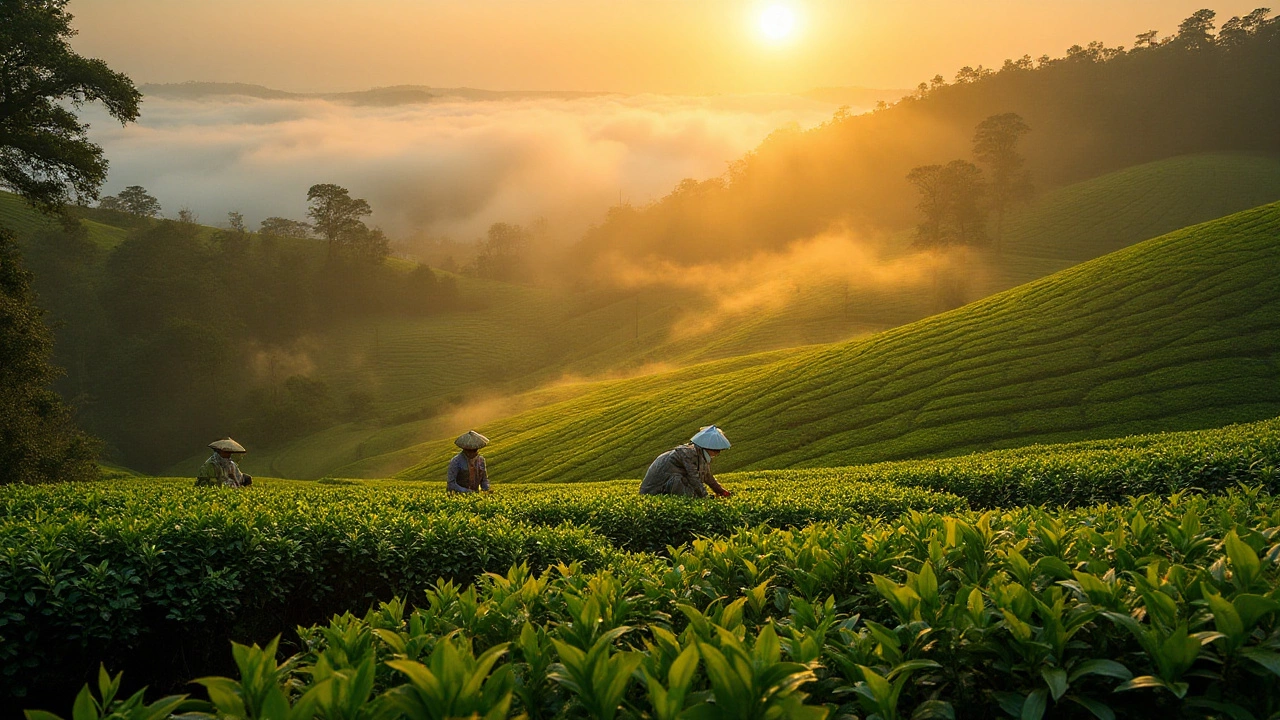Tea Flavors: A Simple Guide to Tasting, Pairing, and Enjoying Your Brew
If you’ve ever wondered why some teas taste grassy while others feel buttery, you’re not alone. Tea flavor is a mix of leaf type, growing region, processing, and even the water you use. The good news? You don’t need a degree in teaology to figure it out. A few practical tips can turn any cup into a mini adventure.
Understanding Tea Flavors
First, get the basics straight. Green teas are usually fresh, vegetal, and slightly astringent – think of walking through a spring garden. Black teas go through full oxidation, giving them deeper, maltier notes that can remind you of dark chocolate or toasted nuts. Oolong sits in the middle, offering a blend of floral and roasted flavors. White teas are the least processed, often light and sweet, while pu-erh brings earthy, forest‑floor vibes.
Flavor isn’t just about the leaf. The water temperature, steep time, and even the kettle material matter. Hotter water (around 95‑100°C) pulls out robust compounds in black tea, but the same temperature can scorch a delicate green tea, leaving it bitter. A simple rule: use cooler water (70‑80°C) for greens and whites, medium heat for oolongs, and near‑boiling for blacks and pu‑erh.
How to Taste and Pair Tea
When you sip, start with the aroma. Swirl the cup gently, bring it close, and inhale. Aromas hint at what’s coming – citrus, spice, or earth. Then take a small sip, let it coat your tongue, and notice the first taste (the “attack”), the body (mid‑palate), and the finish. A good tea will evolve as you drink, revealing layers.
Pairing tea with food works much like wine. Light, floral teas (like jasmine or delicate greens) go well with salads, seafood, or mild cheeses. Bold blacks match roasted meats, chocolate desserts, or hearty breads. Oolongs are versatile – they can sit beside dim sum or a cheese board. For a fun twist, try a fruity white tea with fresh fruit or a buttery pastry.
If you’re planning a tea tasting, keep it simple: offer three to five different teas, serve them in small cups, and provide a neutral palate cleanser (plain crackers or a slice of mild cheese). The post "What to Serve at a Tea Tasting" gives a quick checklist for snacks and setup. Also, remember tea can age. While most teas are best fresh, some pu‑erh varieties improve over years. The article "Is It Safe to Drink 10‑Year‑Old Tea?" explains storage tips and what to look for in aged leaves.
Finally, experiment. Swap the water source, adjust steep time by 30 seconds, or add a splash of milk or a squeeze of lemon. Those small changes can highlight hidden notes you never noticed before. Keep a notebook of what you try – over time you’ll spot patterns in what you love.
Tea flavors are as diverse as the places they come from. By paying attention to basic brewing rules, tasting with intention, and trying simple pairings, you’ll quickly move from casual sipper to confident tea enthusiast. Grab a cup, taste the world, and enjoy the journey.
Tea tasting offers an immersive exploration of diverse flavors and aromas, making it an essential skill for tea enthusiasts. The process involves several steps designed to evaluate the quality and characteristics of different teas. Factors such as leaf appearance, aroma, flavor, and mouthfeel play a significant role in the evaluation process. Understanding the nuances of tea tasting can enhance one's appreciation and knowledge of this ancient beverage. This guide will lead you through the essential steps to enhance your tea tasting experience.
View DetailsExploring the world of tea tasting reveals why your cup may taste different each time. From the influences of climate and soil on tea leaves to the art of brewing, every factor plays a role in crafting unique flavors. Tea tasting isn’t just about sipping; it’s an exploration of culture, history, and sensory experiences. Here, you can discover tips and interesting facts about how to enhance your tea tasting journey.
View Details


